
|
|
|
|
Art…needs
sedimentation
—
A conversation between Li Xiaoshan and Zhu Wei
About
contemporary
Li
Xiaoshan (Li): What do you think about contemporary art?
Zhu
Wei (Zhu): I always revolt against using the term contemporary art at
every turn. Some people always emphasize that they are contemporary, and
even do contemporary art in a way they used to do political movements. I
think they’re only using the name to achieve their own goals. For
instance an eighteen-year-old girl standing in front of us, and she
constantly stress that she’s eighteen, which everybody can see. If
you’re really young, you don’t have to say that, everybody knows.
Then why she has to keep stressing on her age and youth? She must have
some attempt. May be she can make a better deal with her age - if
she’s a prostitute. Youth is visual, if you have to accentuate your
juvenility, that only proves you’re getting old. And this is a typical
situation in art nowadays: there always are people who consider
themselves contemporary. But can art actually be distinguished by
contemporary and none-contemporary? If you say you’re contemporary,
then please tell me what is not contemporary? It’s as simple as after
a few years we cannot say this installation is a contemporary
installation and that multi-media is not contemporary multi-media. To
label art is to make countless illegible individuals into a clear-cut
group - without the label people can’t recognize you. This is the
same with historians study history. But history only studies those
already become past tense, why art in present tense is so hurry to tab,
to footnote itself? Plus, if your work is labeled contemporary right
after creation, it only means the life of your work is in countdown -
in a short time it’s going to be none-contemporary, and will soon be
washed out and abandoned. We have to offer all kinds of ongoing art
phenomena with time and space, and not to hurry defining them as
contemporary or anything else.
Li:
What do you think about the 1985 Art Movement, the post-89 political
pop, Popi, and Cynical-realism, etc?
|
| |
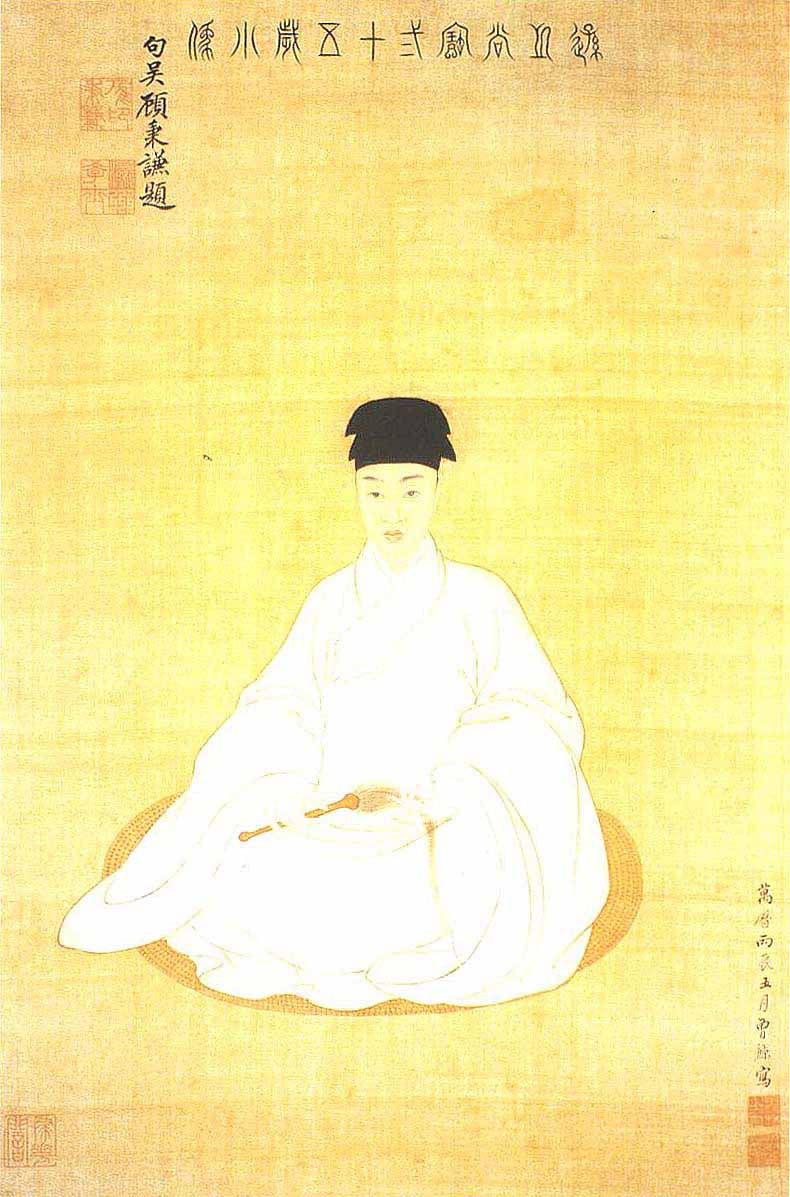 |
Zhu:
The 1985 Art Movement happened not long after the reform and opening up,
at the time we just started to accept some new western stuff. The
movement was self-generated by artists, though technically it was a
primitive emulation of western art, the artists were very simple and
idealistic. Gao Minglu once recalls that after the Grand Exhibition of
Modern Art held in the China Art Museum, the organizing committee asked
the participants to come and take theirs works back, but many artists
didn’t bother to come. The post-89 was quite different. It was created
out of nothing by an overseas gallery and a couple of critics. At the
time it was so called “Post-89 Chinese New Art”, using the word 89
was just a stunt. And the artists selected by the show were all
commercially smart: their works rifely used western materials; the
pictures were rich in color; themes perfunctory and away from trouble;
quickly finished in a short time and dumped in large quantity; no room
for artistic creation.
|
| |
|
|
Li:
What is your view towards today’s ink and wash?
Zhu:
The Chinese ink and wash, or we should say Chinese painting,
historically had always been a parallel form of art and aesthetic with
the western painting. Why many Chinese artists nowadays feel unsure in
their creation? Only because the materials and concepts they master are
not original, but imported. The using of these materials and concepts
can only be copies, not renewable, whereas the Chinese painting, whose
frame of reference is not western. Many people have asked me which
foreign masters had influenced my creation, I can not tell, for in fact
there isn’t any. However, Fan Kuan in the Song Dynasty, Shi Tao and
Badashanren in the late Ming Dynasty and early Qing Dynasty have placed
great influence on me. They are much like my friends around me, my
frames of reference, and objects that I want to challenge and surpass.
Facing
the internalization of art
Li:
Have you ever confronted any problems in your creation in the last dozen
of years?
Zhu:
If there has been any, it’s only on the appearance of the pictures.
And the problem lies on the essence of Chinese ink and wash itself. Ink
and wash is a type of art that’s dominated by lines, while color and
formation only support the lines. Line is very elastic; a formation
based on lines would make color accessorial. If you want to make a
painting with all elements, like oil painting, then the lines will be
weakened, yet Chinese painting most emphasize on lines. The best
meticulous is line drawing, which is the very way to show someone’s
skill. The present painting pattern strives for painting feature and
partialness. I also tried to do frontal but never succeeded, I tore them
up all. There has to be some perspective, this is a barrier of line.
When painting I try my best not to use any western painting element.
Taking color as an example, as long as the color is available in Chinese
Painting pigments I absolutely don’t use Japanese Painting pigments.
You see in my paintings British watercolor pigments, propylene pigments,
and Japanese pigments is because that the Chinese ink and wash pigments
don’t have those colors. As I use perspective, which is only to solve
the problems of ink and wash painting. If the ink and wash painting
remains stuffy, it’ll only be what it was before.
Li:
Ink and wash is not just a simple question of merging into international
orbit, but the possibility of internationalization, and the fact that
internationalization already exists. Under such circumstances, what
course is ink and wash to follow? A new background has come into being,
the internationalized stage has become a background that has to be
faced, how are we going to cope with it?
Zhu:
I think that adhering to what we have already had have become more
important.
Li:
Like Chinese, to translate it into English, there has to be a
translator. And translating certainly will include filtration and
misunderstanding.
Zhu:
Misunderstanding means your creation still needs interpretation, which
is probably because your conception is yet to be perfect. If you paint
with your heart, why would you worry about misunderstanding? Why would
you need to interpret?
Li:
The forms are different. For instance literature, it has to be
translated. And language translation, no matter how good it can be,
there has got to be something that’s missing. While painting is a
universal language that doesn’t need to be translated. We look at
African art, American art, European art, or Chinese traditional art, we
don’t need a translator to explain to us.
Zhu:
For painting is a very primitive language.
Li:
To enjoy or accept, it’s much easier than words. Word language is
largely abstract, needs to be transformed from one system to another.
Zhu:
And needs to be embodied with words.
Li:
If translate something from English to Chinese, there are many things
that can only be understood in English language system, which can’t be
translated in Chinese language system. And wise versa, there are many
Chinese that can’t be precisely translated into English. The Beijing
dialect, as of many other dialects, is hard to be understood in other
places of China that’s out of the Beijing dialect system, not to even
mention the English system. This is the very limitation and
characteristic of word language. But painting, as a visual language
form, is universal. It doesn’t need any translation to be understood.
Anyone is able to directly appreciate arts that don’t belong to his
system. I was talking about internationalization, and you asked me if
you were international? Why do you have such confidence and gut? It
means your experiences have already proved that you are. If we look back
to this question, we’ll find that painting language wasn’t universal
as it is now in the era when communication was obstructed. A certain
type of visual graphic was not understandable and appreciated by people
who didn’t belong to the cultural system. For example in the Qing
Dynasty, both for the westerners to Chinese paintings and Chinese to
western paintings, the difficulty of understanding was unbelievable.
Zhu:
I think the impact of the Chinese art on the western art was fierce too.
|
| |
| Li:
According to the documents of the time, the misunderstanding of the
western audiences to the Chinese paintings, and the evaluation of
westerners on the weak sculpting ability of the Chinese are enigmatical
nowadays. How come the Chinese simply couldn’t paint? In his book
Hegel directly said that the Chinese didn’t know plastic arts. Why?
Hegel’s reason was: we didn’t know light and shadow perspective. He
said we didn’t understand far and near of the light and shadow, this
is perspective. So, according to him, the paintings such as
Badashanren’s, just sketches of a few things, no background, no
nothing, isn’t this blind drawing? Obviously, his judgments were based
on western painting system.
|
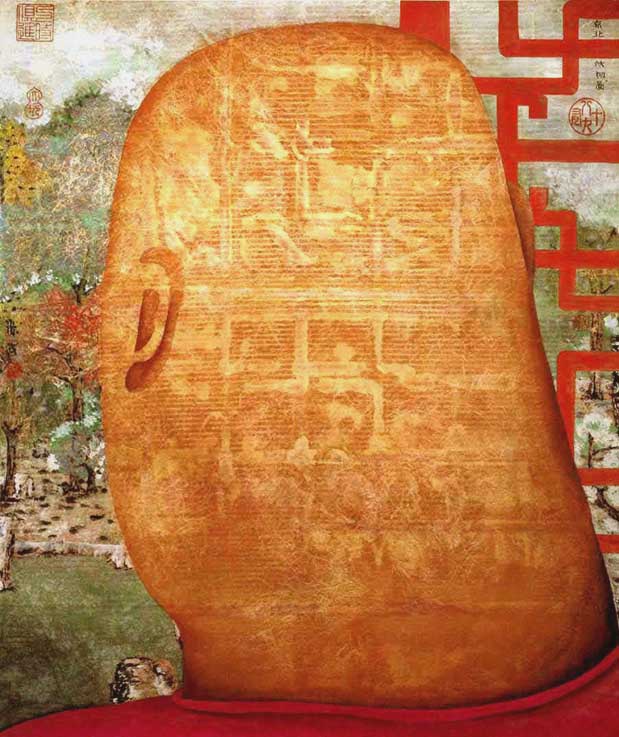 |
| |
|
|
Zhu:
And the judgments were made hundreds of years ago, he didn’t really
understand our painting system.
Li:
What is his problem then? Zou Yigui, a theorist and artist in the Qing
Dynasty, when talking about western paintings in his art review,
appraised western painters as “artisans though meticulous, not
artists”. Hegel said that the Chinese didn’t know what sculpting
was, and Zou Yigui said that western painters were craftsmen, could they
paint? They were not even painters. So at that time, the
misunderstanding on painting between the west and China, and the
difference on the evaluation of art were ridiculous seeing from now. But
as time passed by, after some time, when the westerners gradually had
seen more Chinese paintings, especially had had a better understanding
of the Chinese culture system, that they started to discover that the
connotation of the Chinese culture wasn’t as simple as they first
imagined. And the Chinese also had gradually found out that the western
painters were more than just “artisans though meticulous”, the
western paintings had a lot of good things that the Chinese painting
system didn’t grasp. And to the end of the 19th century, the social
reformers even used western painting as a weapon to reform Chinese
painting, and undrew a curtain. Once the curtain was undrawn, it had
made a great impact on our cultural system and painting system.
Zhu:
The attitude of the reformers in the end of the 19th century and
beginning of the 20th century, to my opinion, was entirely a reaction in
haste. A reaction to the swift collapse of their originally complacent
cultural state of mind, caused by the aggression against China by the
western countries. Now we may think that the reaction was hypercorrect,
but if you think on their minds, a vast country as China was, had been
ravaged and whacked up by the western countries for a long time, one
must be doubtful of the culture and civilization he belonged to. But the
thing is the very reason for China’s poverty and weakness at that
time, as well as being trampled upon, was due to its political system.
The problem of culture had something to do with the system, but down to
the concrete issue of art, so many factors were involved, such as
aesthetics standpoint, technical characteristic, and picture
composition. Such factors can’t be measured with scientific,
technological, military, or economical indexes. Their attitudes were
influenced by the social factors, not closely contacted with art itself.
Li:
Being suppressed by the forceful western culture, the steps of Chinese
painting became askew, sometimes marked time and sometimes back and
forth. The pace of Chinese painting’s evolvement had been normal,
basically linear. But by the end of the 19th century, its step forward
became turbulent. 100 years have passed, and a new situation has
emerged. The contemporary ink and wash artists create paintings and take
their works to the west, the western audiences no longer question
whether the painters are Chinese or not? What kind of painting is ink
and wash? They stress on painting itself. They like it they buy it. Take
you as an example, you say that those who love and appreciate your works
are all from the west. And these westerners would not ask “hey, Zhu
Wei, who are you? What do you do? What’s the meaning of your
paintings?” They don’t need to ask. I think there are at least two
reasons for this: first, the long-standing cultural exchange has widened
the eyeshot with which the western audiences accept the culture and art
of non-western system; second, which is more important, your works match
the thought, sentiment, appreciation and palate of the contemporary
western audiences. This is because your works are contemporary. If you
paint a work that looks like done by ancient Chinese, they perhaps would
buy it as a tourist souvenir. However, souvenir and art are completely
different things, as if we go to Tibet, Xi’an, or Yunnan and buy these
stuff. As a contemporary painter, the contemporary nature in his works
is crucial. Although a Chinese painter, you have in fact formed an
interpretation relationship with the western ideas and art fanciers.
They don’t ask you, and don’t need to pursue the significance of the
ethno-symbols in your works, as well as other profundities the works
might have. They only consider that as a painting work, they can accept,
they are able to appreciate, as simple as this.
Zhu:
These two points nicely illuminate that art is like this: it needs to
fulfill people’s aesthetic demand. Just a little bit of taste, a
little bit of innovation would make people like it. This is aesthetic
function. Frankly, I think painting becomes complicated after being
discussed by people. It’s actually very simple. If my paintings, other
than decorative functions, can express my thoughts to the audiences,
move the audiences, I’d be satisfied. When you study art or academic
trends you need to have in-depth understanding, but does such in-depth
understanding help one with his creation or one with his appreciation?
Many westerners are even ignorant of painting while still buy things
that are related to art. He depends on his instinct. Everyone has his
instinct. There might be some artists create on instinct, so the both
sides instantly reach a sort of connection. Some artists are very
famous, such as van Gogh, Picasso, and Richter, etc., because they have
become a guarantee of quality, people don’t need to worry about
whether they’re worth it or not, just need to worry a little about
whether they fit their tastes. To do profound research in art, artists
themselves don’t have the necessity, and general collectors don’t
have the time.
Li:
The result is rather simple. But sometimes man’s curiosity makes them
to explore cause from result, what reasons have caused the result?
Foreigners look at your paintings, what makes them fall in love with the
paintings at the first sight? The reasons are the two points I just
made, one is their eyeshot is wider than before, they can accept things
from non-western system. And two is your works have interpretation,
they’re different from ancient works, though you still use ink and
wash, the form of expression is different, so is the visual effect. This
kind of visual effect is close to the historical accumulation of western
painting, therefore, your works are not apart from western artistic
experience but approaching.
Zhu:
I think this is only a coincidence.
Contest
between Fan Kuan and van Gogh
Li:
The westerners in the early age, their acceptance of Chinese ink and
wash were completely driven by the curiosity to exotic culture. While
our acceptance of the western culture is not only exotic but wooing the
western path.
Zhu:
Now it’s still the same, still exotic culture. The fact that we have
to add in social factors when accepting western culture is only Chinese
reaction. The west never needs to have oil painting internationalized,
never.
Li:
The western oil painting never needs to get close to any direction.
Zhu:
So the Chinese ink and wash, the real contemporary Chinese art don’t
need to get close to anybody. They are all international, even if an
exhibition held by a county cultural center, at the moment of the
exhibit, the exhibition is also international.
Li:
It doesn’t seem to be reliable to take an exhibition held by a county
culture center as an example. We talk about internationalization, talk
about whether one exhibition bears a significance of
internationalization, mainly according to two aspects: one is whether if
the exhibition has had influence on a certain extension, and whether if
it has brought about certain effectiveness. By effectiveness here I mean
its influential force. If the Venice Biennale didn’t invite artists
from all five continents, didn’t become a focus of all artists and art
lovers, and even ordinary audiences, we could not call it an
international exhibition. Same with the Canes Film Festival and Oscar.
When we call an event international, we base on the international
influence the event bring about. Two is that if we call an exhibition
held by a county culture center an international event, maybe because it
has invited and accepted artists and works of international level, but
the most important is, these artists and works have really participated.
Zhu:
Well like van Gogh, put out a few paintings to show them to the people
in a small French village, not even an exhibit, but aren’t the
paintings international?
Li:
van Gogh’s example and phenomenon doesn’t explain a county
exhibition in China’s Gansu or Yunnan. This only proves what I just
said about influence. He is familiar to and loved by all the artists and
art fanciers from around the world. His works are frenzied in the
international market because of his global fame. On the contrary, in a
county culture center in places like Gansu or Yunnan, someone, whose
works never appeared in any other exhibition, puts on a show by himself,
and emerges of itself and perishes of itself after the show, it only
means his works are just sketches and exercises of an art fan. It’ll
never make an international topic. International means it’s got to be
something that artists and art lovers from many many countries pay
attention to. So, that’s why I took your works as the beginning of the
topic, though people who collect your works have a different state of
mind with that of collecting van Gogh and Picasso. Van Gogh and
Picasso’s value on the international art stage will keep increasing,
increase to a sovereign position. I’ve seen an exhibition register of
the New York Metropolitan Museum of Art, in the last 50 years, the
exhibitions with the most audiences were not any grand exhibits, but van
Gogh’s solo exhibitions. This is the very proof of van Gogh’s
influence.
Zhu:
I have paid my homage to it too.
|
| |
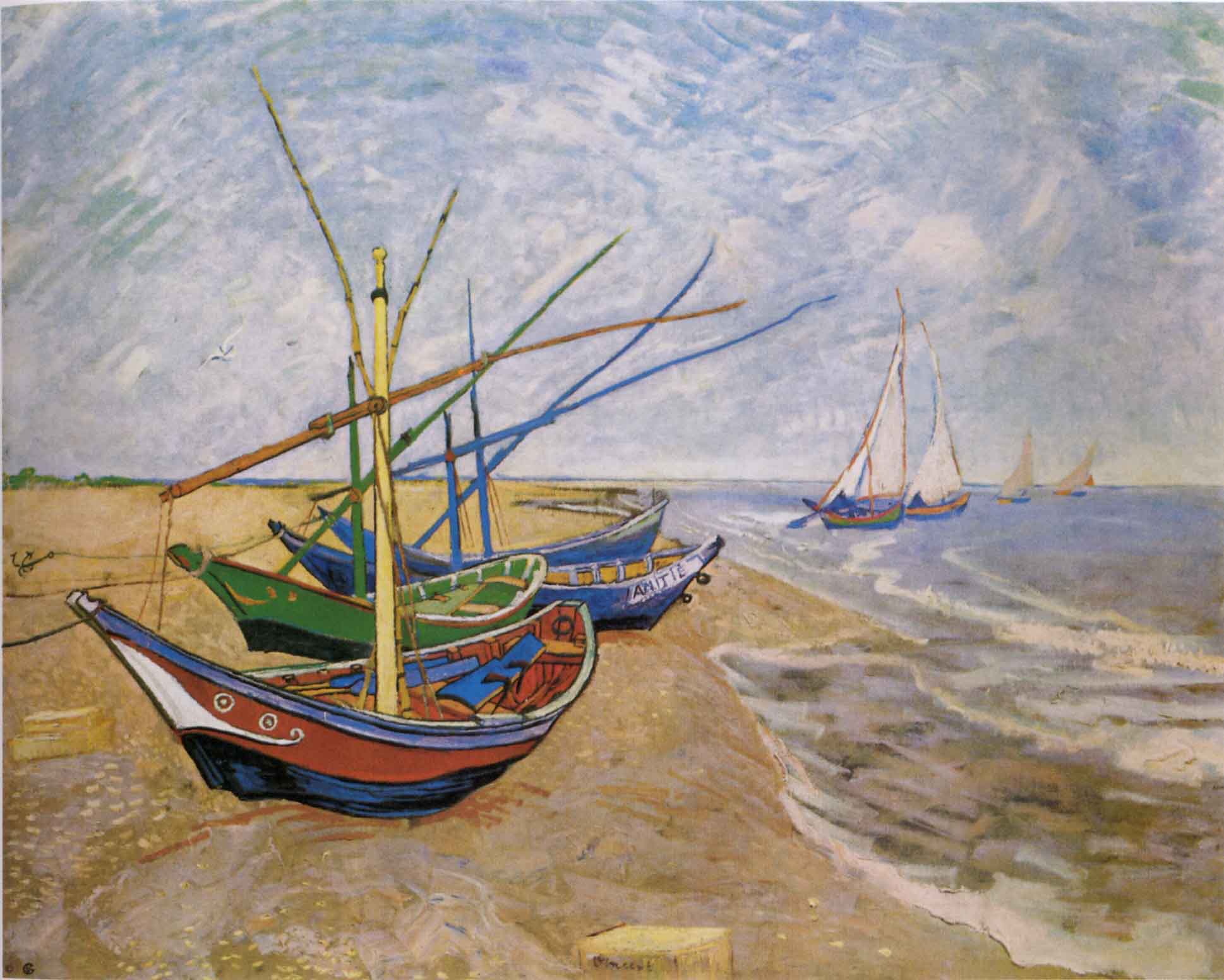 |
Li:
Recently a Picasso’s oil painting fetched more than one hundred
million US Dollars at the auction, incredible, the record is a victory
of Picasso as well as art. Scaled by number, art can draw such a big
amount of capital, and the size of that piece of work isn’t big, nor
is it Picasso’s magnum opus. Picasso and van Gogh are the most
redoubtable in the auction market, last time a van Gogh’s work fetched
eighty million US Dollars, amazing! Now Picasso exceeded one hundred
million, which shows that there is still space for appreciation. When I
read this news I was excited. This shows that the significance of art in
people’s life is still increasing. The fact that one would spend so
much money on an artwork proves the importance of art in people’s
heart.
|
| |
|
|
Zhu:
This is more of a victory of merchant. The role of art here is no more
than a donkey with a blinder that’s pulling a millstone.
Li:
The Chinese auction market is becoming more and more hot. There contains
many social factors that yet to be decoded. It’s not as simple as
spending money on paintings. There are more significances than just
buying a piece of painting. Looking at the domestic situation, even the
authorities have invested large amount of capital to build the
collection system. Moreover, the popular collection is in frenzy…
There is an interesting question, just flashed on my mind, when I was
talking about 200 years ago the westerners treated the Chinese ink and
wash paintings as exotic cultural relics, you chimed in that “now
it’s still the same”. Why till now the phenomenon still lasts?
Zhu:
This is understandable. The reason is the current art in the world is
still evaluated according to western standard. We can imagine, if the
contemporary art was defined by us, we’d also choose the materials and
conceptions that we’re familiar with to be the standard. Now we are
abandoning our original art that has developed for over thousands of
years and using others’ materials and conceptions to strive for
others’ recognition. Sticking a hot face on a yet to be cold ass, how
are we going to have a future?
Li:
If nothing’s changed, the topic is not a topic. Now because the
bulwark lies between the Chinese and western cultural system has been
broken, (the Chinese art) is no longer exotic.
Zhu:
(The bulwark) has been broken, it is us who have given in our position
and surrendered. You see the nowadays-Chinese contemporary art is full
of the shadows of Andy Warhol, Richter, David Hockney, and shadows of
the shadows, is there anything Chinese? Can this be called the Chinese
contemporary art? You emulate the others, and they take you in the game,
what fun do you have?
Li:
These issues to us seem to be unable to grasp and see thorough, why can
we never get around them?
Zhu:
It’s because of our inferiority complex.
Li:
Especially the current stage, people have strong psychological
expectation to internationalization. They feel that no matter how famous
they are on the domestic stage doesn’t compare with a nobody on the
international stage.
Zhu:
This is probably a matter of money.
Li:
Not only money. I have met with a lot of artists who are wallow in
money, who are much wealthier than we can imagine, who can afford to
build a castle, construct a road, etc. But their seriousness on putting
up a show in America or Europe is absolutely not a joke. They’re no
satisfied by only selling their paintings, they need to impose some
influence on the international stage. The influence they take for is to
expose themselves in places where the masters once have been to or
shown.
Zhu:
It doesn’t matter for an artist to have such thinking. They think
it’s internationalized as long as they’ve been there. A few hundred,
or even a few thousand painters’ ideas, being put together, make up a
virtual prospect of internationalization.
Li:
No matter a few hundreds or thousands, the different impression of
internationalization in their minds combined, forms a virtual prospect
of internationalization. Just like a mirage.
Zhu:
As when I was small, the teacher asked us to write a composition longing
the 21st century: the new century is moment away, let’s countdown, 10,
9, 8… The fact is, open your eyes on the next day, open the door and
go out, it’s still the same bitter faces you see everyday.
Li:
Exactly. It only brings us a very shadowy impression. Ah, the new
century has come!
Zhu:
The new century has come, you still do whatever you have got to do, and
your mind hasn’t changed.
Li:
This comparison is great. This is just the imaginary of artists. This is
a penetrating metaphor. Your two parables are pretty sharp. One is
hundreds or thousands of painters have gone out, and the definitions of
internationalization in their minds combined to form an
internationalization mirage. The second is the countdown. As an artist
you put forward an analogy like this, it is different from the calm
analysis drawn apart from experience. It’s worth being analyzed. The
Chinese art in the past, for instance are the Song Dynasty paintings
international? What about the Ming and Qing Dynasties? We can
ratiocinate along this line, and draw such a conclusion: the excellent
works of any country, any nation, and any region are all international.
Zhu:
That’s about it. I keep saying that they’re all international, and
they are the mutual wealth of the mankind.
|
| |
|
Li:
No matter what time it belongs to, as long as it’s an outstanding
piece of work, and contains the universal value of mankind, it’s
international. This kind of works may not be recognized in a certain
era.
Zhu:
Right. It coincides common aesthetic standard. Van Gogh’s works are
very international now, and are considered superexcellent. In the
decades before and after he died, nobody knew him. But this doesn’t
affect him to be international in the later years. The Song Dynasty
paintings, after thousands of years, they are still international.
|
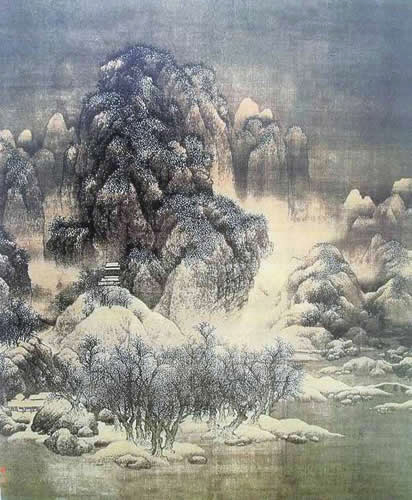 |
| |
|
Li:
I have come up with an example, you just talked about the new century. A
western organization, to welcome the coming new century, has selected
100 persons who have made great contributions to the mankind in the last
millennium. Among which according to their standard there are five
Chinese, and one of them is Fan Kuan, which shows how big an influence
he had placed on the world. I felt at the time that this was selected by
the west, in spite of their limitation of west centric, they didn’t
ignore other parts of the human beings. In their regard, Fan Kuan was a
master, was one of the most respectable artists in the last one thousand
years. When Fan Kuan was creating such grandiose landscape paintings,
what were the western painters doing? In the Middle Ages of the west,
there were only artisans painting icons, religious paintings. Of course
Gombrich thinks the Middle Ages painting is the best, because it’s
schema. This is a judgment based on his own theory. Now you know Fan
Kuan is international, but at that time there wasn’t such a term. He
was a master of one thousand years, a most representative artist on
earth, and made great contribution to painting.
Rules
of Internationalization
Zhu:
Now (the definition of) internationalization has been clarified. As long
as a thing shown in a county cultural center is international, it may
produce international influence.
Li:
So internationalization is not a desire. As if in America, Germany, or
France, despite their territorial advantage and how many activities that
might have some international influence they have held, the works shown
in these activities aren’t necessarily going to be international. But
your example of county cultural center is too general.
Zhu:
I use this as an example, is only to extremize the issue. Thus I can
make the concept of internationalization clear. If I take provincial art
museum as example people would still misunderstand my point.
Li:
It is an extreme example.
Zhu:
Here’s another example, I won’t have a motorcade in my wedding, and
I won’t have a bunch of people whom I don’t necessarily know to have
a banquet, but the formality won’t change the fact that I’m married.
Though I don’t have a grand wedding ceremony I am wedded, and my
marriage is a real existence.
Li:
The reality exists. You’re married. As I just said,
internationalization is not an activity locale, it’s historical, is
gradually born in practice.
Zhu:
Right. The quality of my marriage is high, though I don’t have the
ritual. But I am in fact married. So, if everyone understands this, they
wouldn’t have been so anxious.
Li:
The wedding example you provided just explains that you don’t want the
ostentation and extravagance, but you can’t make others not to have
the ritual. Many people think it’s necessary. Wedding is a social
formula.
Zhu:
According to what you said, then people who don’t have the ritual
would all be cohabiting illegally.
Li:
There is a funny example: I have a friend, who has got married and
obtained the marriage certificate, and a new home has been settled too.
Later his wife has got pregnant, but the parents of both sides didn’t
consider them married, because they didn’t have a motorcade swaggering
the streets, and yet a banquet… So the parents said how could you call
this a marriage? Banquet and motorcade are even more important than the
marriage certificate, that’s called a marriage, that’s what the
concept of getting married is.
Zhu:
This is the problem of standard. I think there’s a problem, let’s
still use wedding as an example. You marry to a woman, you cheat her
that you only want to have a banquet but not the certificate, she would
definitely disagree. Because without the certificate your relationship
is not essential. You ask 10 girls and none of them would agree.
Everybody knows the issue is essential.
Li:
The little girls are sharp, only the certificate guarantees that the
marriage is real. The law only recognizes the certificate, not the
ceremony forced by the parents. The little girl understands, a hundred
tables of banquet is useless, a hundred rounds of motorcade parade is
meaningless. The understanding of internationalization is the same.
|
| |
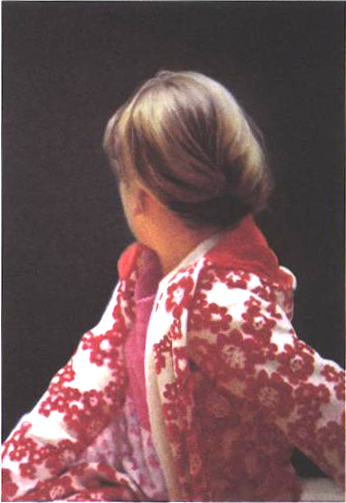 |
Zhu:
Right Mr. Li!
Li:
All of those artists who desire for internationalization should learn
from the little girl. They need to learn what is the essential of the
question. For art, if you are not accepted by the art history in the
future, everything you do is nonsense.
Zhu:
Each art camp must have its own uniqueness, and combined to give the art
activities internationalism.
|
| |
|
|
|
Li:
When I was talking about Fan Kuan, and internationalization, I have
talked about this issue. The Chinese had already created such meticulous
and lofty paintings at that time, if the contemporaries want to continue
the resplendence, on visual quomoto they must not grub for small things,
minor details and nonessentials.
Zhu:
Some people’s ability is only enough to do those. Painters can only
create in their power. I have many subject matters that I can’t paint.
Painters’ way is different from that of critics. This is a technical
matter.
Li:
I also often quote a writer’s words in my articles, many times
already: “a writer can’t write what he wants to write, he can only
write what he’s able to write.” This is truly like an incantation.
You often go to America and Europe, what you have seen is different from
what they have. For instance what Liu Wenxi was facing in his golden age
of creation were only old farmers and yellow earth. So besides old
farmers and yellow earth, what else could he paint?
Zhu:
That’s right. If he painted something else, then he’s a cheater.
“Brush and ink go with the time”.
Li:
You have to admit that all kinds of elements in your works, like
chemical reaction, are changing.
Zhu:
Yes, my change is obvious and yet a gradual process.
Li:
This kind of change is subtle and exerted slowly. It’s not like a
switch, pah, light is on, and pah, light is off. It’s not so obvious.
One can tell from your books. After the “9×11”, you have gone to
America once again…
Zhu:
Twice.
Li:
You have personally been to the scene, and it’s impossible that your
feelings aren’t affected. This is like to inject some drug into your
brain nerves, it’s invisible, it may not be within your eyeshot, but
it’s in effect. I showed your paintings to people, friends both in and
out art circles, and they actually all say (the paintings) have
something to do with “9×11”.
Li:
Some artists may not care about the national economy and people’s
livelihood, not concerned with the world affairs, not moved with the
heaviness of being… such as sufferings and stresses, they may be
ignorant to all these. But not all of the artists can ignore.
Zhu:
I feel I’m very concerned.
Li:
In the literature circles in the 80’s and 90’s there’s such a
point of view that creation has to keep away from politics, and a real
good work is independent of politics. I’m not totally against the
idea, nor a hundred per cent for it. Why? If the writers of the entire
society all care about politics, it’s abnormal. On the contrary, if
none of the writers in a society cares about politics, it’s abnormal
too.
Zhu:
I think you don’t need to worry about this too much. There must be
some who care. As the rule of market it accommodates itself. The rule is
not only applied to economy, and it’s not that there is only market
economy and market rule. All aspects of the society have their own
rules, and they all have an invisible hand that is adjusting.
Li:
Evading is the main attitude many contemporary writers and artists
adopt. It has become a bomb shelter.
Zhu:
You evade, but it still influences you.
Li:
Zero influence. So many works created by writers and artists, what
contemporary predicament have these works reflected?
Zhu:
……
Li:
And there are people who have said that now China is in transition, a
time for great masters and great works to emerge. What do you think?
Zhu:
Time of transition produces good works, this is a pure bullshit. Art
creation is not cooking, that you must throw the food into the pot when
cooking oil is hot. Art creation needs sedimentation.
----
August, 2004
|
|
艺术……是需要沉淀的
——李小山、朱伟对谈录
谈当代
李小山(以下简称李):你怎么看当代艺术?
朱伟(以下简称朱):我一直反感动不动就使用当代艺术这个词。有些人总是强调自己是当代艺术,甚至用和以往搞运动一样的方式来倒腾当代艺术,我想他是要假借这个名义来说事儿。就像一个十八岁的大姑娘站在我们面前,她老强调自己十八岁。大家伙儿都看着呢,如果你年轻,不用说,大家能看得出来。她为什么总强调自己十八岁,强调自己年轻呢?说明她有企图。或许她是想用十八岁来卖个好价钱——如果是三陪的。年轻是可以看出来的,如果你强调自己年轻,证明你已经开始衰老了。在现在的艺术里就有这种情况,总有人视自己为当代艺术。艺术有当代和不当代之分吗?如果你说自己是当代的,那么请告诉我,哪些是不当代的?就像我们过几年不能说这个装置是当代的装置,那个多媒体不是当代的多媒体一样。把艺术贴上标签是让模糊的无数个体聚合成清晰的群体——不这么做大家认不出你来,历史学家也是这么研究历史的,可历史研究针对的是已经成为过去式的东西,为什么当下正在发生的艺术还那么急于给自己贴标签、下注脚呢?再说,如果你的作品一出来马上就被定义为当代艺术的话,那么就证明你的艺术寿命从现在开始进入倒计时,在短时间内将会成为不当代的作品,成为被淘汰、被抛弃的作品。我们要给现在正在发生的各种艺术现象一定的时间和空间,不要急于把当代艺术或其他什么的标签贴在它们身上。
李:你怎么看八五美术运动、后八九的政治波普、泼皮、玩世现实主义等等?
朱:八五美术运动的时候我们刚刚改革开放,开始接受西方的一些新东西。八五美术运动是由艺术家自发形成的,虽然在方法上是对西方艺术的一种初级模仿,但是当时这些艺术家们都非常单纯和理想化。高名潞曾回忆说,在中国美术馆举办的现代艺术大展结束后组委会让艺术家们回来取画,很多人都没来,他们都不要了。后八九则不然,它是由当时境外的一家画廊和大陆的一两个批评家活活给撺出来的。当时的称法是后八九中国新艺术,用八九这个词儿就是一个噱头。他们挑选出来的画家也都非常有商业头脑,作品普遍用西方的材料,画面色彩艳丽,题材不痛不痒、不惹事儿,在很短的时间内快速定格,批量倾销,已谈不上什么艺术创作了。
李:你对今天的水墨画怎么看?
朱:中国水墨画,或者我们应该叫中国绘画,它和西方绘画在历史上一直是两条并行的绘画方式和审美方式。中国现在为什么有很多艺术家在创作时感觉底气不足,就是因为他们现在所掌握的材料和观念不是原生态的,是舶来品,用这些材料和观念只能翻版,没有再生的机能。而中国绘画则不然,它的参照系不在西方。曾经有很多人问过我,有哪些国外的大师对我的创作有影响,我说不出来,因为确实没有。而宋代的范宽、明末清初的石涛和八大山人对我的影响则非常大,他们就像是生活在我周围要好的朋友一样,是我的参照系,也是我较劲和超越的对象。
面对艺术的国际化
李:在你这十几年的创作过程中有没有遇到过什么问题?
朱:如果有什么问题,那也只是在画面上的,而且问题是水墨画自身本质上的。水墨画是一个以线为主导的画种,颜色、造型都是配合线,线是很有弹性的,以线为主的造型,颜色就会变成辅助的,你要是想把它画成一个全因素的,像油画那样的,那么线就弱了,可是中国画就是强调线的。画得好的工笔画就是白描,白描最见一个人的功力了。现在的图式讲究画特写、画局部,我也试着画过正面的都不成功,最后都给撕了,必须得带点透视才行,这就是线的一个槛儿。画的时候能不用西画的因素就尽量不用。拿颜料来说,只要中国画颜料里有的,我绝不用日本画颜料。你看我的画里面有英国水彩颜料、丙烯颜料、日本颜料,是因为中国出产的水墨颜料没这几种色,就像我用透视一样,其实就是为了解决水墨画的问题。如果水墨画还是固步自封,就还只能是原来那样。 |
| |
| 李:水墨画不是跟国际接轨这么简单化的提法,而是国际化的可能,国际化的事实存在的问题。这种情况下,水墨画又当如何?新的背景产生了,国际化的舞台已经变成一个不可不面对的背景之后,我们又当如何?
朱:我觉得坚持自己已有的就变得更为重要。
李:像汉语,把它翻译成英语,有一个翻译在里面。翻译,势必有一个过滤,也有一个误读。
朱:误读,说明你的东西还需要解释,这可能是因为你的构思还差点儿意思。你用心画出来的画,还怕人家误读,还要解释? |
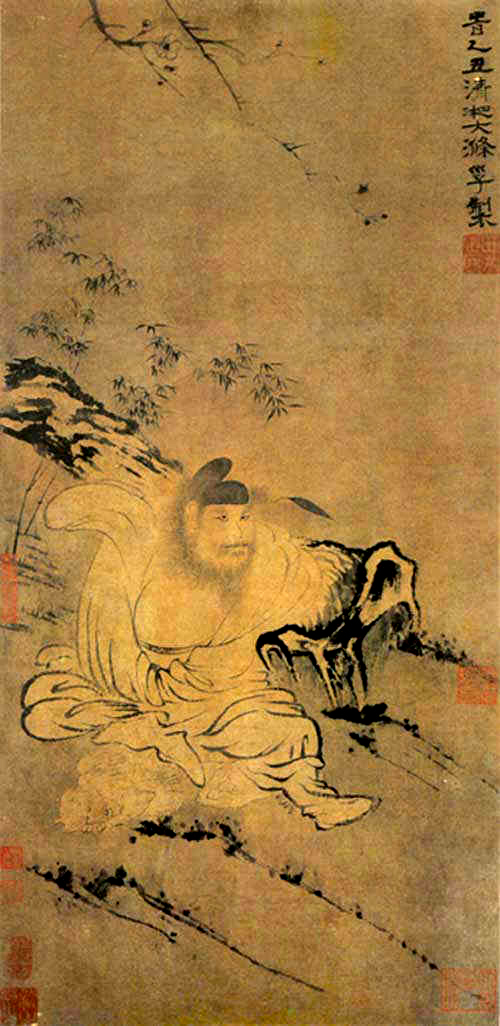
|
| |
|
|
| 李:方式不一样。比方说文学,必须要翻译的。文字翻译,它不管翻译的手段再高明,一定会有遗漏掉一些东西。而绘画语言,它是通用的,不需要翻译。我们看非洲艺术、看美洲艺术、看欧洲艺术、看中国的传统艺术,不需要一个翻译告诉我们。
朱:因为绘画语言很原始。
李:欣赏也好,接受也好,要比文字近得多。而语言却带有很大的抽象性。需要从一个系统转换成另一个系统。
朱:而且还需要具体地文字陈述。
李:如果把英语转换成汉语,里面很多只有英语系统能够领会的东西,而汉语系统是不能翻译的。同样,汉语有些东西也不能很好地翻译成英文。北京话、以及很多方言,不要讲在英语系统了,就是离开北京话的系统,其他地方都很难理解,这就是语言的局限性和语言的特征。但是绘画作为视觉方式,是通用的,它不需要通过任何翻译而能够领会对方的意思,可以直接欣赏非自己系统的艺术性。我刚刚讲的国际化问题,你反过来问我,我是不是国际化的?为什么你有这样的信心和这样的底气?说明你的经历实际上已经证明你是。我们把这个问题回过去再看看,就会发现绘画语言在交流阻隔的时期并非像现在这样是通用的,某种视觉形象会让非文化系统的人无法领会,不能够欣赏。比方说清代,那会儿的西方人对中国画和中国人对西洋画,领会之艰难,令人匪夷所思。
朱:我觉得中国画对西方文化的冲击也是非常厉害的。
李:根据当时的文献记载,西方观众对中国画的误读,认为中国人的造型能力之弱的评价,现在看来真是不可思议。中国人怎么不会画画的啊?黑格尔在他的书里面直接说中国人根本不懂造型艺术,为什么呢?他提出“不懂”的理由是:我们不懂光影透视,他说我们不懂光影远近,就是透视嘛。那么,按照他的说法,像八大山人的画,就像速写勾画的几个东西,背景也没有,什么也没有,这不就成瞎画了吗?很显然,他是从西方绘画系统作为自己判断的基础的。
朱:他是在几百前做出的判断,对我们的绘画系统并不了解。
李:他的问题是什么?清代的邹一桂,也算是理论家、画家,他在自己的画评里谈到西洋画时,用“虽工亦匠,不入画品”来评价。黑格尔讲中国人不懂造型为何物,邹一贵讲西方画家是匠人,他们会画画吗?根本连画品都不入。那个时代,在绘画上彼此不理解,在双方的评价上造成的差异之大,现在看来很可笑的。但是,随着时间的流逝,一段时间之后,西方人开始慢慢地接触多了,尤其是对中国的文化,整个文化系统有所了解,才发现中国的文化所包含的东西,不是他们开始所想象的那么简单,而我们中国人后来看看,慢慢发现西洋画也不是“虽工亦匠”,里面有很多中国绘画系统里面没有的东西,也非常好。甚至到了19世纪末的时候,那些社会革新者把西洋画当成改革中国画的武器,并拉开了序幕,这个序幕拉开后,对我们的文化系统和绘画系统本身带来了极大的冲击。
朱:19世纪末到20世纪初期的改革者的态度,在我看来,完全是因为中国当时遭受了西方列强的侵略后,他们原有自足的文化心态迅速瓦解后的急速反应,现在,我们也许觉得是矫枉过正了,但是放在当时想想,一个泱泱大国,长时期的被列强蹂躏瓜分,肯定是要怀疑自己隶属的文化与文明是否有问题。只是造成中国当时积贫积弱,任人宰割局面的形成是源于政治体制的,文化上的问题也和体制有一定关联,但如果落实到具体的艺术问题上,其中涉及到许多方面,包括美学观点、技术特征、图式选择等等,这些并不能用科技、军事、经济等方面的指标来衡量,他们的态度还是受到社会因素的影响,和艺术本身的联系并不大。
李:被西方的强势文化打压之后,它往前走的步子开始歪歪扭扭了,有时候原地踏步,有时候退退进进,中国画原来的演变节奏是正常的,它基本上是线性的。但是到了19世纪末,它的步伐紊乱了。经过一百多年后,又开始产生了一个新的情况,当代水墨画家从事创作,把作品拿到西方去,西方的观众不再去追问,画这张画的是否是中国人?水墨画是什么样的画?他们着重于画面本身,他们喜欢就买下来。举你的例子,你说你作品的欣赏者和爱好者都在西方。西方人不会去问,“哎,朱伟,你是什么人?你是干什么的?你的画是什么意思啊?他们不需要去问。我想至少有两点。第一点,长期的文化交流使得西方的观众对非西方系统的文化艺术的接受的视野比以前开拓了,第二,更重要的是,你的绘画作品与西方当代观众的思想感情、欣赏趣味是吻合的。因为你的作品是当代的。如果你画一张作品一看像是中国古人画的,他们也许会当成是旅游纪念品而购买。但是,旅游纪念品和艺术是两回事,就像我们到西藏、西安、云南去购买这些小零碎。作为一个当代画家,作品里的当代性是关键,尽管你是一个中国的画家,但和西方的观点,和西方艺术爱好者事实上建立了一种通译关系。他没有问你,也不需要去追寻你画的那些民族符号的含义,以及里面可能包含了哪些更深奥的东西。他们只考虑这是一张绘画作品,他能够接受,能够欣赏,如此简单。
朱:这两点不是正好说明绘画,艺术就是这样,它就是要符合人们的审美需求。可能稍微有点品位,稍微有点创新的东西,人们就会喜欢,这就是审美的功能。老实说,我觉得绘画是给人们言说后变得复杂的,其实它是很简单的。我的作品除了装饰功能之外,还能把我的观念传达给观众,对观众有所触动,我就满意了。你研究艺术和研究学术走向的时候,需要深入理解,但这是不是有助于画家画画,观众欣赏呢?很多西方人根本不懂绘画,却仍要买和美术有关系的东西,他就是凭直觉,每个人都有自己的直觉。可能有些画家画画,也是凭直觉,一下子双方就达成了一种沟通了。有的艺术家他的名气非常大,你比如说梵高、毕加索、里希特等等,因为他们已经成为一种质量的保证,大家甭需要判断值不值,只是稍微需要判断的是符不符合自己的口味。对艺术深入地研究,画家本人没这个必要,而一般的收藏者也没这个闲功夫。
李:结果很简单,但是有时候人的求知欲和好奇心,会顺着结果往原因探究,什么原因导致了这种结果。老外看你的画,为什么他们一看就喜欢上了,原因是我刚才讲的两点,一点是从西方系统以外的东西看,视野比以前更开阔。第二点,你的作品有通译性,已和古代的作品不一样了,尽管你是用水墨画的材料,但表现方式不一样,从而达到的视觉效果不一样,这个视觉效果和西方绘画的历史积累接近了,所以,你的作品和西方艺术经验不是远离,恰恰是接近。
朱:我想那是巧合。
范宽与凡高的较量
李:早期的西方人,他们对中国水墨的接受完全受异域文化和好奇心的驱使。我们对西方的不仅是异域化的问题,而是对西方道路的追逐。
朱:现在也是一样的,还是异域文化。我们对西方的接受,要加进社会元素,那是中国人的反应。西方从来没有拿油画要跟国际接轨,从来没这回事儿。
李:西方的油画不需要向任何方向靠拢。
朱:所以中国水墨画、真正的中国当代艺术也没有必要去和别人靠拢,本身全是国际的,哪怕一个县级文化馆,做展览的一瞬间,那个展览也是国际化的。
李:拿一个县文化馆的展览举例子,似乎不很确切。我们谈国际化,谈某个展览有无国际化意义,主要有两个方面:第一,这个展览是否具有相当范围的影响力,有没有产生一定的有效性,我指的有效性是其影响力,如果威尼斯双年展不是接纳五大洲所有艺术家参与,它每次展览不是成为了艺术家和艺术爱好者,甚至一般观众的关注热点,就不能讲它是国际化展览,像戛纳电影节,奥斯卡电影奖,道理完全一样。当我们讲一个事件是一个国际化事件时,主要是看它产生的国际影响力。第二,县文化馆办一个展览,称它是国际的,那么,这个县文化馆也许邀请和接纳带有国际水准的艺术家和作品来参与,并且最主要是,人家也果然来参与了。
朱:像凡高那样,当时在法国的小村子拿出了几张画给人看看,连个展览都算不上,那些画是不是国际性的?
李:凡高的例子和现象不足以解释中国甘肃、云南这样的县文馆办展览。恰好说明了我刚讲的影响力的问题,他是世界五大洲所有的艺术家和艺术爱好者所熟知的,由于他的国际知名度,导致了他的作品在国际市场上的高热。反过来讲,甘肃、云南这样的县文化馆,如果某一个人有一批画,以前没参加过展览,自己在文化馆办了一个展览,办完了就自生自灭,那么他的作品仅仅是一个美术爱好者的写生或是习作,不能构成一个国际化的话题。既然是所谓的国际化,那就是很多国家的艺术家和艺术爱好者都要去关注。所以,我为什么一开头就把你的画作为话题来谈,尽管现在收藏你的作品,不是像收藏凡高、毕加索一样的心态去收藏。凡高、毕加索在国际艺术舞台上会加码,加码,加到了一个至高无上的地位。我看纽约大都会博物馆一个展览记录,近50年来,观众人数最多的展览不是什么大展,而是凡高的个展。这就说明了凡高的影响力。 |
| |
|
|
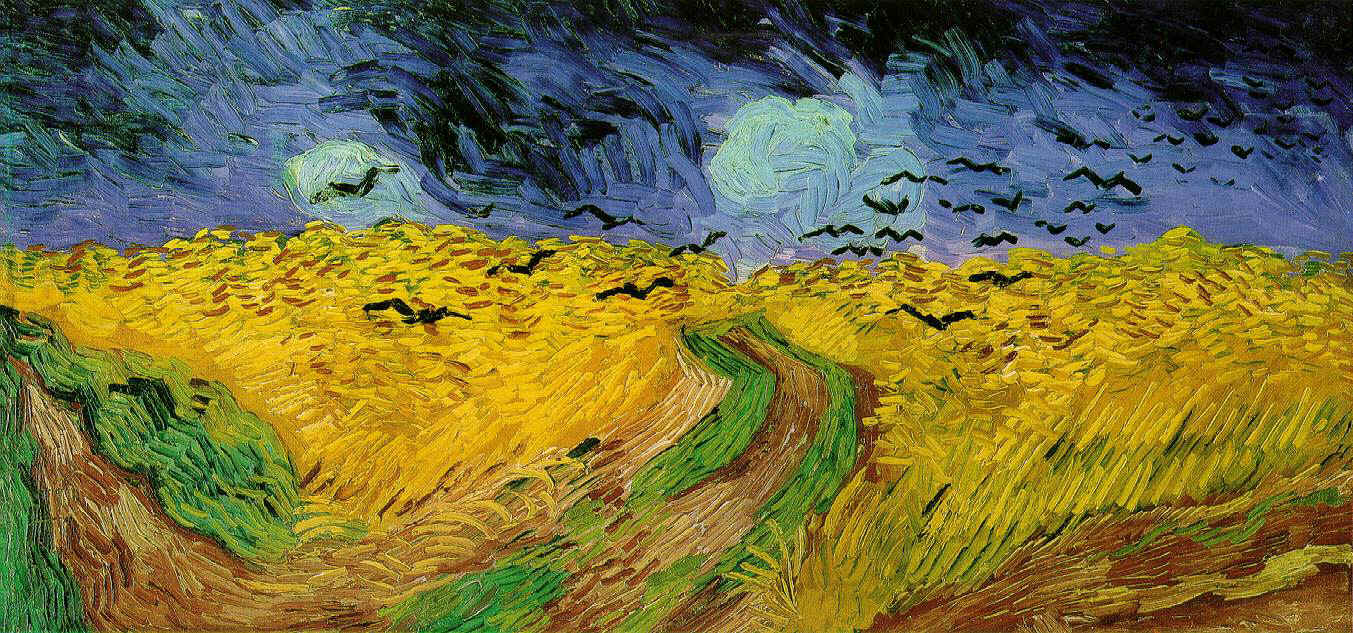 |
朱:我也去参拜过。
李:毕加索的一张油画最近在拍卖市场上以一亿多美元的价格成交,很了不起。这个记录是毕加索的胜利,同时也是艺术的胜利。从量化指标来讲,艺术能吸引如此巨大的资金,并且那张画尺寸不大,还不是毕加索的代表作。毕加索和凡高现在是拍卖市场最厉害的,上次凡高拍八千万元,令人震惊,现在毕加索超亿元,如此看来他们的上升空间还是有的。我看到这个消息以后,心里很高兴。说明艺术在人们生活当中的份量还在增加,能够花这样的巨资去购买一件艺术品,那就说明艺术在人们心中的重要性。 |
| |
|
|
| 朱:这更多是商人们的胜利,艺术这时的角色只是一头戴着眼罩拉磨的驴。
李:中国的拍卖市场也越来越厉害了。里面包含了很多有待解码的社会因素,不是拿钱去买画这么简单,里面有很多比仅仅买一张画更深刻的意义。从目前的国内形势看,连官方都开始斥巨资来打造收藏系统了,而民间收藏更是火得一塌糊涂……有一个问题很有意思,刚刚闪了一下,我谈到一二百年前西方系统把中国水墨画当作一个异域的文物来对待,你插了句“现在也差不多”,为什么到了现在,还是这个现象?
朱:这个可以理解,因为当下世界的艺术还是以西方人的标准来制定的。我们可以想象,如果让我们来定义当代艺术,我们是不是也会选择自己熟悉的材料和观念来作为一个标准呢?现在我们是抛开自己已有的几千年发展下来的艺术,拿别人的材料和观念去争取别人的认可,用热脸去贴一个还没冷的屁股,怎么会有前途呢?
李:如果没有改变,这个话题是无从谈起的,因为西方和中国的文化系统壁垒已经被打破了,已经不再是异域风情的东西了。
朱:是打破了,是我们放下自己的阵地,投降了。你看现在的中国当代艺术到处都是安迪.沃霍尔、里希特、大卫.霍克尼的影子,还有影子的影子,除此之外有一点中国自己的东西吗?这能叫中国的当代艺术吗?你模仿人家,人家带你玩儿,你有什么可乐的呢?
李:这些话题对我们而言似乎摸不到边的,看不到头的。为什么我们绕来绕去绕不过去呢?
朱:是我们的自卑心理在作怪。
李:特别是现阶段,人们对国际化的心理期待很强烈。他们感觉到在国内舞台上混的名堂再大,也不如到国际舞台上小混一下。
朱:这个很有可能是金钱上的问题。
李:不仅是钱,我所接触的很多画家,腰缠万贯,其富有程度已经比我们想象的还要厉害许多,能够修山庄,修公路什么的。但是,他们对去美国或者欧洲办画展的重视绝非是轻描淡写的。他们卖画已经感觉不过瘾了,需要到国际舞台上施展一下影响,他们认为的影响,就是要去是大师呆过的,或者展示过的地方去亮亮相。
朱:作为一个画家有这样的想法,没什么。他们认为只要站在那儿就是国际化了。几百个画家,几千个画家脑子里想的,放在一起,拼凑成了国际接轨的虚幻图景。
李:几百个也好,几千个也好,脑子里不同的国际化印象,合在一起,形成了一个虚幻的国际化图景。就像海市蜃楼那样。
朱:就像我小时候,老师让写文章去憧憬21世纪一样:新世纪要到了,大家一起倒数10,9,8……其实,第二天一睁眼,推门出去看到的还是那几张苦脸。
李:一模一样。它给我们一种很虚幻的印象,啊,新世纪来了!
朱:新世纪来了,你该干什么还是干什么。你脑子里的东西没有换。 |
| |
|
| 李:这个比喻,非常棒,这就是属于画家想出来的,这就是一个很精妙的隐喻。你有两个比喻很好,一个是几百个、上千个画家出去了,他们脑袋里的国际化观念加起来就是国际化图景。第二个是倒计时。作为一个画家提出来这样的比方,与离开这个体验的冷静分析不尽相同。值得分析它,中国以往的艺术,比如宋代的是不是国际的?明代的、清代的是不是国际的?可以从这个来推演,推演到这个结论:任何国家、任何民族、任何地域的优秀作品都是国际化的。
朱:差不多。我一直在说,它们是国际化的,它们是人类共有的财富。
李:不管它的时代如何,只要它是优秀的作品,能够具有人类的普遍价值,都可以说是国际化的。这种作品也许在某一个时期并不显示出来。 |
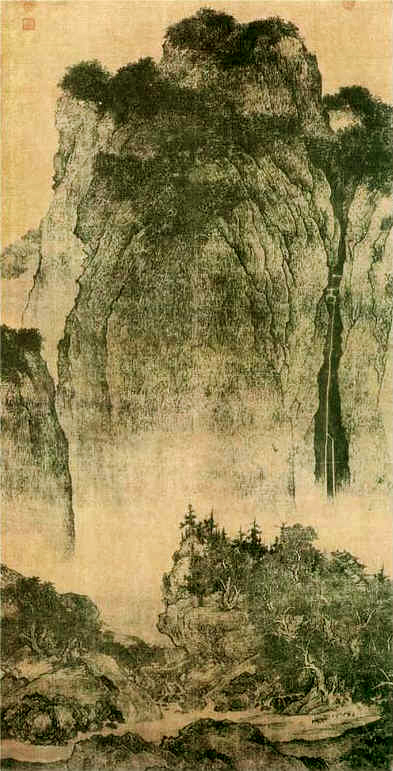
|
| |
|
| 朱:对,符合大家审美的标准。凡高当年画的东西,现在非常国际化,也是最顶尖的艺术作品,他死的前后几十年,根本没有人知道。但不耽误他以后成为国际化。宋代的绘画,几千年以后拿出来,还是国际化的。
李:我想到一个例子,你刚刚谈到的新世纪,西方人一个机构,为了迎接新世纪的到来,做了评选,在一千年内,全球找100个为人类做出重大贡献的人,中国在他们的评选标准下,选出了5个,其中之一是范宽。在人类的一千年里,100个人中,范宽占了一席之地,说明他对世界的影响力有多大。当时我就感觉到,这是西方挑选的。尽管他们有西方中心主义这样一个局限,但没有排除他们对人类的其他部分的关注。在他们关注的视野里,范宽是大师,是1000年里最值得尊重的艺术家。范宽画出如此伟大的山水画时,西方人在画什么呢?同时期的西方中世纪,只有工匠画的圣像,画的宗教画。当然贡布里希认为,中世纪的画是最好的,因为它是图式的,这是从他个人理论做出的判断。你看现在范宽是国际化的吧,但是当时没有这个提法。他是一千年里的大师,是世界上最具代表性的大师,他为绘画做出了巨大的贡献。
国际化的规则
朱:现在国际性被澄清了。县文化馆它里面的东西是国际的,它就可能造成国际影响。
李:所以国际性不是一个愿望。如果是美国、德国、法国,就算它地域上的优势,做了很多活动,带有国际性影响的,不等于他们做活动中的作品,以后就能够成为国际性的。不过你县文化馆的这个说法可能过于泛化了。
朱:我举这个例子,是为了把这事极致化,这样我就能把国际化这个概念解释清楚。如果我说的是省级美术馆,别人还会对我的观点产生误解。
李:这是个极端的例子。
朱:再比如,我结婚肯定不会让汽车排队,认识不认识的一帮人坐那吃饭,但我结婚的性质不会变,虽然我没有那么大的活动,但我结了婚了,它的实质存在。
李:这个事实存在,已经结过婚了。就像我刚刚讲的,国际化并非是一个活动场所,它是历史性的,是在实践过程中慢慢产生的。
朱:对,我结婚的质量非常高。但是我没有搞那种仪式化的活动,但我实实在在是结婚了。所以,如果大家都能明白这么一点,就不会那么急躁。
李:你刚刚举的结婚例子正好说明了,你不去摆这个排场,不能要求其他结婚的人不摆这个排场和仪式,很多人认为这是有必要的,结婚是一种社会规则。
朱:如果按你这样说,不摆这个排场的人不就成了非法同居了。
李:有一个例子很有意思,我有一个朋友,他结婚,结婚证领了,小家也安顿好了,后来老婆肚子都大了,但双方家长认为没有结婚,因为,他们还没有一个车队在街上绕一圈,还没有办几桌……所以双方父母讲,这叫什么结婚啊?酒席、车队比结婚证可靠,这才是结婚,结婚的概念是这样的。
朱:这就是标准的问题。我觉得这有一个问题,我们就说结婚这事,你跟一个姑娘结婚,你骗她只办酒席,但不领证,她肯定不会同意。因为你不跟她领证,没有实质的关系,你再问十个姑娘,也没有人会同意,这实质的问题大家都明白。
李:小姑娘明白着呢,这个证才能确立结婚的实质,法律规定的是结婚证,而不是双方家长逼迫搞的形式。那个小姑娘明白,酒席办一百桌没用,车队绕一百圈也没用,对国际化理解也是一样。
朱:李老师说得好。
李:这些希望国际化的艺术家都应该向这个小姑娘学习,要认清什么是问题的实质。对艺术来讲,你不受到将来艺术史的接纳,那就是白忙活。
朱:每一个艺术阵营都必须有自己的特征,凑到一块才能使这些艺术活动具有国际性。
李:我刚刚在谈范宽的时候,在谈国际化的时候,已经说过这个问题了。中国人在那个时期所创造的绘画已到了如此精妙高超的程度。当代人如果要延续这种辉煌,在视觉方式上肯定不能挖那些小东西,不能挖那些细枝末节的东西。
朱:有的人的能力只能办那些。画家是在力所能及的范围内干事的,我也有好多题材自己画不了的,画家和批评家的路子是不一样的,这是技术上的事。 |
| |
|
|
|
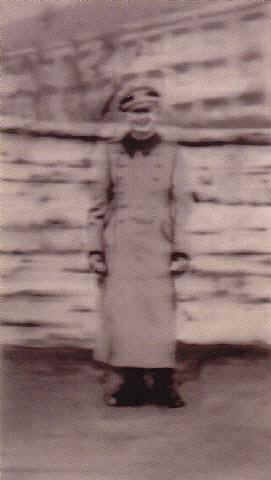
|
李:我在文章里也经常引用一个作家的话,已引用了好多次:“作家不能写你想写的东西,只能写你能的东西。”简直像咒语一样。你经常在美国跑,经常在欧洲跑,你看到的东西和他们不一样。我举个例子,刘文西在创作的黄金时期,面对的是老农民、黄土地,他不画老农民、黄土地,画什么呢?
朱:那是,他要画别的,就成骗子了。“笔墨随时代”嘛。
李:你不能不承认,你画里的各种元素,像化学反应一样,在起变化。
朱:对,我的变化很大,但是一个渐变的过程。
李:这种变化是潜移默化的,它不是像开关一样,啪,灯亮了,啪,灯暗了,不这么明显。从你的画册就可以看出来。911事件后,你又去了美国…… |
| |
| 朱:去了两次。
李:你亲临现场,不可能不对你的感受产生影响。这个东西就像药物打在你的脑神经里面,它看不见,它也许不再你的视野里面,但是它在起作用。我把你的画给人看,圈内圈外的朋友,竟然都说和“9·11”有关。
李:某个画家可以不关心国计民生,可以不关心世界大事,可以不关心沉重感……疾苦和紧张之类,可以不关心。但不能所有画家都不关心。
朱:我觉得我非常关心。
李:在80年代,90年代的文学界,有这样一个观点,就是创作要远离政治,真正好的作品是与政治无关的。我并不完全反对这个,但并非百分之百地赞成。为什么?如果一个社会的作家全去关心政治,是很不正常的。反过来讲,如果一个社会的所有作家都不关心政治了,那也是不正常的。
朱:我觉得这你也不必担心,肯定有人会关心。就像市场规律一样它会自我调节。规律不止体现在经济上,不是只有市场经济和市场规律,社会的各个方面都有它自己的规律,都有一只无形的手在进行调控。
李:逃避是当代很多作家、艺术家采取的主要方式,它成了一个防空洞。
朱:你逃避,但是它会影响你啊。
李:影响等于零,这么多作家写的东西,画家画的东西,反映了当代什么样的状态?
朱:……
李:还有人曾说现在是中国社会转型时期,会出大师、大作品,你怎么看?
朱:处于转型期就会出好作品,这纯属胡说八道。艺术创作不是炒菜,油一热就得扔进去,是需要沉淀的。
——2004年8月 |
|
|
|
|
|
|